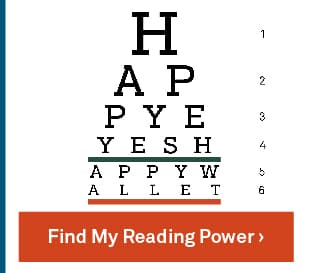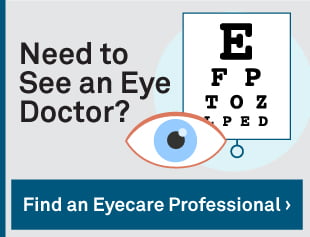If you’ve been finding yourself struggling to see things up close (such as menus, text on your laptop, phone, etc.) – don’t worry. This is absolutely normal and happens to many of us over time. You, like millions of others around the world, might be developing presbyopia which means you might be in need of new reading glasses.
When looking for new reading glasses that make your eyesight clearer, the most important step in the process is to determine what reading power the lenses in your glasses should be. There are several ways to determine your reading power.
Maybe you’ve already been wearing glasses and simply need to refresh your reading power. Or maybe you’re completely new to the world of reading glasses and are in search of your very first pair of readers.
Here we will cover one of the most efficient ways you can determine your reading power – by using a Printable Diopter Chart.
What is a Diopter Chart?
If you’ve made it this far, it might be helpful for you to properly understand what a diopter chart is, what it looks like, and how to use it.
A diopter chart typically has rows of letters, numbers, or words ranging in text size. The power of your reading glasses should depend on what row you can read with clarity. Let’s get into how to use a diopter chart properly.
Testing Your Vision with a Diopter Chart
A huge benefit of using a printable diopter chart – also known as a diopter conversion chart – to test your vision, is that you can do it on your own time from your own home. All you have to do is simply print out the diopter chart we have below and follow the instructions.
Before you get started – make sure to remove any reading glasses, contacts, or eyewear from your eyes beforehand to get an accurate read!
And if your eyes need different strengths, simply keep one of your eyes closed and do the diopter chart test for each eye.
Steps to Testing Your Vision with a Diopter Chart
Firstly – make sure to keep the chart 14 inches away from your eyes. Then begin by attempting to read the smallest line of words at the very top. If you can’t see it with clarity, then continue down the chart, reading each line until you can read a line with clarity.
Once you’ve determined the first line of words that you can read clearly, you’ve officially discovered your reading power! The best reading power/magnification for you is labeled to the right of whichever line you could read first.
You might have noticed that the diopter chart only goes up to +3.25 magnification. If you are still having trouble seeing the last +3.25 line, we recommend that you contact your local eye doctor/optometrists’ office for assistance to find the corrective lenses with the proper strength that best suits your vision needs.
Testing Multiple Magnifications
Our diopter chart increases magnifications by 0.25 diopters (+1.00, +1.25, +1.50, etc.). Some diopter charts increase by .50, or even the whole number. This is done for more simplicity, however, we recommend sticking with something more robust in order to get a more accurate conclusion on what reading power you need.
Once you’ve determined your reading power and are testing out reading glasses, we recommend that you try out reading glasses with powers slightly less and more than your reading power. This will give you the chance to get an even more accurate feel for what power you are most comfortable with.
We recommend that if you are comfortable with two powers – always choose the lower power of the two.
When Should You Visit an Eye Doctor?
Of course, using an eye-chart at home is easy, quick, and still an accurate way to determine your reading power without having to make an appointment at an eye doctor’s office. However, we don’t want to steer you away from eye doctors! There are still cases in which it may be more beneficial for you to visit an optometrist’s office to find a solution for your visual difficulties.
Reading glasses for the eye condition presbyopia can be purchased over-the-counter in many stores and pharmacies. However, for conditions such as nearsighted refraction errors, you will most likely need a pair of prescription glasses from your optometrist in order to correct your vision.





0 Comments